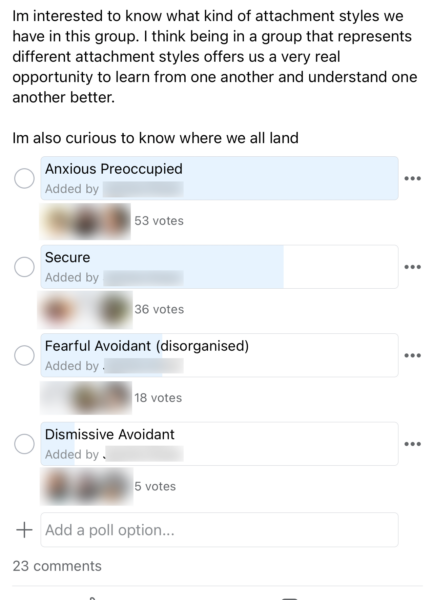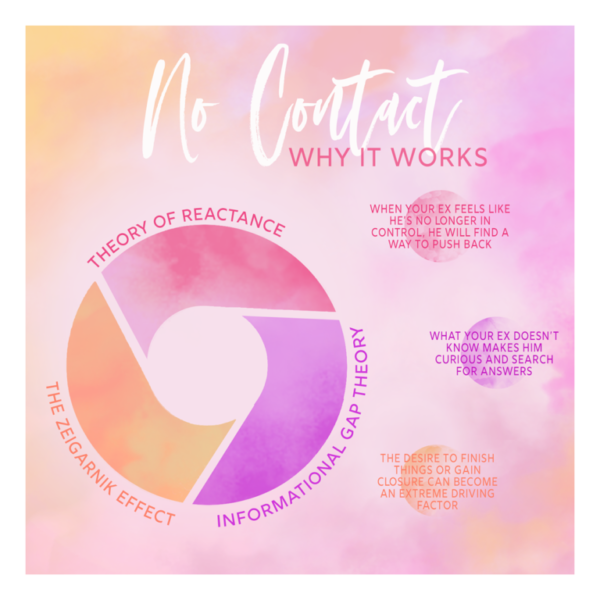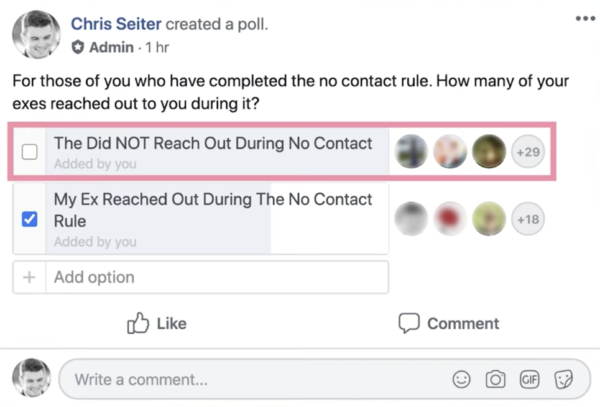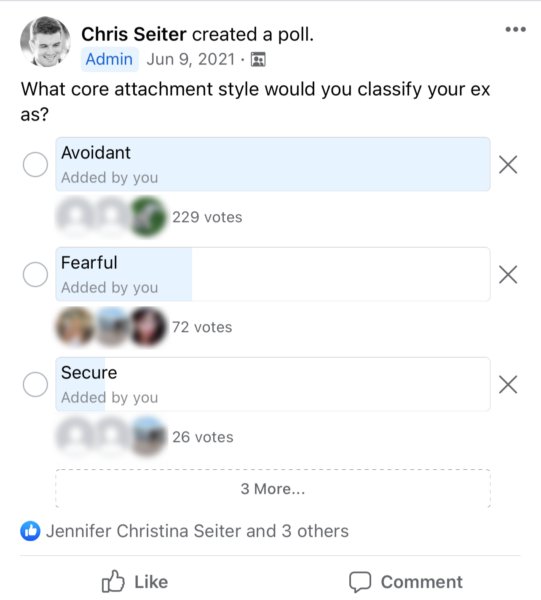Here’s a question: Is the no contact rule the best way to get over an ex?
The general consensus will have you believe it is.
I mean, George Lucas himself agrees. In fact, there’s a famous YouTube video circulating right now featuring him talking about selling Star Wars to Disney,
His exact words:
“And it really does come down to a simple rule of life. When you break up with someone the first rule is no phone calls. The second rule is you don’t go over to their house and drive by to see what they’re doing. The third one is you don’t show up at their coffee shop, etc.”
He basically described the no contact rule.
So, it seems universally accepted that one of the best methods to ‘get over’ someone is to essentially enter into radio silence. However, I’m not entirely convinced that it’s that simple.
I mean, I generally agree but I’ve actually found that what’s far more important than the rule itself is what you are doing with the time when the rule is enacted.
And that’s what I’d like to have a discussion on today.
- I’d like to look at the link between codependency and the difficulty of getting through no contact
- Why, despite it’s flaws, I consider no contact an important stepping stone for getting over an ex
- Apply the lessons of my latest success story interview to prove that there is a right way to do the no contact rule
This is going to be a good one so let’s get started!

What Are Your Chances of Getting Your Ex Boyfriend Back?
Take the quizCodependence And No Contact Actually Don’t Mix Very Well
So, if you actually examine the statistics, the no-contact rule and codependence don’t mix very well.
My wife recently wrote an insightful article on codependence where she argued that codependents don’t recover from breakups quickly.
This is crucial for anyone listening because, based on research on our average audience, we’ve found that they tend to exhibit an anxious attachment style.
What’s fascinating is that some therapists and marriage counselors equate codependence and the anxious attachment style as similar.
So, if you have an anxious attachment style, you’re likely to be codependent in your relationships.
What we understand about codependence specifically is that they don’t recover from breakups quickly, and silence after a breakup often exacerbates their emotions.
As you can imagine, implementing the no-contact rule, where you impose a 21 to 45 day period of silence on your ex, can feel like torture because it contradicts what you genuinely want to do.
We’ve found that codependent individuals not only dislike relinquishing control, but they’re also natural problem solvers and find it extremely challenging to be idle.
In many cases, I’ve observed that the no-contact rule can actually cause our clients to think more about their exes.
Yet, despite this I still consider the no-contact rule to be an essential step towards moving on from someone.
Why I Still Consider The No Contact Rule To Be An Essential Stepping Stone In Recovery
I believe the crucial mental shift needed with the no-contact rule is that it needs to be less about making your ex miss you and more about outgrowing them.

What Are Your Chances of Getting Your Ex Boyfriend Back?
Take the quizA few years ago, I wrote a VERY comprehensive article, something of a holy grail, covering everything you could ever want to know about the no-contact rule. It clocks in at around 25,000 words.
From the 10 years I’ve been doing this, I’ve learned that the no-contact rule is only ever as good as your intentions behind it.
The natural assumption most people make when implementing a no-contact rule is that it will make their ex more likely to miss them.
There is some research that backs this up:
- The theory of reactance
- The Zeigarnik effect
- The information gap theory
These psychological concepts all revolve around the effects of silence on someone.
However, when I polled our community and asked those who have employed the no-contact rule if their exes had reached out to them, over 60% reported that their exes didn’t contact them at all during the no-contact period.
This research makes sense, given that we’ve found most of our clients to be anxious types, with most of their exes tending towards avoidance.
An avoidant is not likely to be the one to breach the silence; typically, it has to be you.
So, I think that what makes the no-contact rule so effective isn’t its reactance aspect or that it’s more likely to make your ex miss you. I would argue the opposite: it’s not as likely to make your ex miss you. But it does give you an opportunity to ensure that your time is being spent wisely.
This was made abundantly clear in my most recent interview with a success story, a woman named Ashley.
Looking At An Actual Success Story And How They Used The No Contact Rule
(If you want to listen to Ashley’s Success Story In Full Click Here)
Ashley’s story is truly runs the gamut of situations.
- High school sweethearts with her ex
- Co-owning a restaurant
- Living together (after the breakup)
- Then being kicked out of the house
- And full out blocked.
Naturally, she was devastated when the breakup happened.
But what I’d really like to highlight here is HOW she used the no contact rule to outgrow her ex.
Three specific things stuck out to me.
- She reclaimed her independence
- She was incredibly patient
- She had insane confidence
Ideally if you can accomplish these three things during the no contact rule you’ll be doing it “right.”
How She Reclaimed Her Independence (And Why That’s So Important)
Like I stated above I know that many of our clients’ exes exhibit avoidant tendencies.
Those with avoidant tendencies harbor a deep fear of losing their independence.
I talk about that with Coach Tyler:

What Are Your Chances of Getting Your Ex Boyfriend Back?
Take the quizIf you look at Ashley’s success story, which I highly recommend, during the relationship she was inseparable from her ex –
- They were high school sweethearts
- Business partners
- Housemates.
She literally described their relationship as if they were ‘attached at the hip.’
So, often what transpires during breakups is that those with anxious tendencies can smother their ex, making them feel as if they’re losing their independence.
It kind of seems like that’s what happened here in Ashley’s circumstance.
The no-contact rule, however, forced Ashley to cultivate more independence in her life.
As a result, she accomplished incredible things:
- Securing her own job
- Returning to school
- Getting a new apartment
These independent decisions are crucial, and often overlooked, aspects of the equation. Remember, codependents aren’t typically independent. So, by becoming more independent she signals to her ex that she’s moving on (which of course makes her more attractive.) But it also proves to Ashley (not that she needed any proof) that she didn’t need to rely on the breakup.
So, the first thing you should focus on during the no-contact rule, if you truly want to move on from someone, is to foster more independence and self-reliance.
The Often Overlooked Value Of Patience
The second aspect of Ashley’s situation that struck me was her remarkable patience.
I even complimented her on this during our interview.
She essentially played the long game, refusing to get upset when things didn’t immediately go her way.
This can be a challenging concept for many people new to this approach to grasp. They often expect results during the no-contact period itself, in the initial 21 to 45 days, whether that’s reconciling with their ex or moving on.
The reality, however, is that it can sometimes take up to six to seven months to fully recover from a breakup or to rekindle a relationship.
If you need proof of that look no further than this video I did a few years ago,
Patience is needed, which can be difficult for individuals with strong feelings of anxiety or codependent tendencies.
So, if you’re catching the theme here, the goal during your no-contact period should be to find ways to manage not only your anxiety but also your codependent tendencies.
Doing so creates an interesting synergistic effect where you can achieve two outcomes.
- You can either become more attractive to your ex, prompting them to want you back
- Or you outgrow your ex and lose interest in getting back together.
This is why, when people ask me,
“Chris, should I try to get my ex back?”
I don’t always immediately respond.
Often, I believe they already know the answer before they ask the question, especially if they haven’t implemented a no-contact rule or done some of the work I’ve already suggested in this article.
They want their exes back.
Yet, I always caution people not to make that decision until they’ve completed a no-contact period and outgrown their ex.

What Are Your Chances of Getting Your Ex Boyfriend Back?
Take the quizBy doing that, they’ll no longer view the relationship through rose-colored glasses, focusing only on the peak moments. They’ll also acknowledge the low points, assessing the experience in a more honest and comprehensive way.
And if they follow the steps I’m suggesting here, they’ll find they’ve gained more confidence.
Looking At Ashley’s Insane Confidence
In my opinion, confidence often emerges from personal success and accomplishment.
If you need proof of that please refer to my spirit animal David Goggins,
A breakup can often leave you feeling low and unsuccessful, leading to negative impacts across various aspects of your life.
To bounce back, you need to start rebuilding yourself. I’ve observed that a successful application of the no-contact rule enables a break from overthinking about your ex, as long as you focus on activities that bolster your confidence.
In Ashley’s case, she embarked on various independent pursuits:
- She returned to school
- Landed a new job
- Moved into a new apartment.
Her daily efforts may have been minor, but embodying the “Rome wasn’t built in a day” mentality, her momentum gradually picked up, leading to increased confidence.
When she reinitiated contact with her ex, he noticed the change and became more interested.
Of course, he wasn’t keen on reconciling immediately, but having practiced patience during the no-contact period, she simply continued focusing on her life.
But for me the ultimate confidence move was that she returned the engagement ring he gave her. And the act of that didn’t even faze her because she was so confident she would get it back.
In her mind it was still hers, he was just borrowing it for a while.
Making The No Contact Rule About Self Improvement Not Ex Improvement
I guess the core message I’m trying to convey is that it was during the no-contact period that Ashley shifted her focus from her ex to self-improvement. I
f you’re considering the no-contact rule as a strategy for moving on, understand that it’s less about ignoring your ex until things magically improve, and more about removing distractions to focus on healing and self-care.
Many people get seduced by the idea that the no-contact rule will make their ex miss them, often overlooking the crucial aspect of self-care needed not just to make that happen, but also to potentially move on from their ex.
Here’s an industry secret seldom talked about:
Every success story I’ve interviewed had a common thread, they were prepared to get over their ex, and it was this shift in focus that made all the difference.
The true path to reconciliation lies in healing yourself first.
Often, once you’ve healed, you can make a sincere decision about whether you want your ex back. Many times, you’re already over them and may not even want them back.
And ironically, it’s often at this point when they want to come back.



